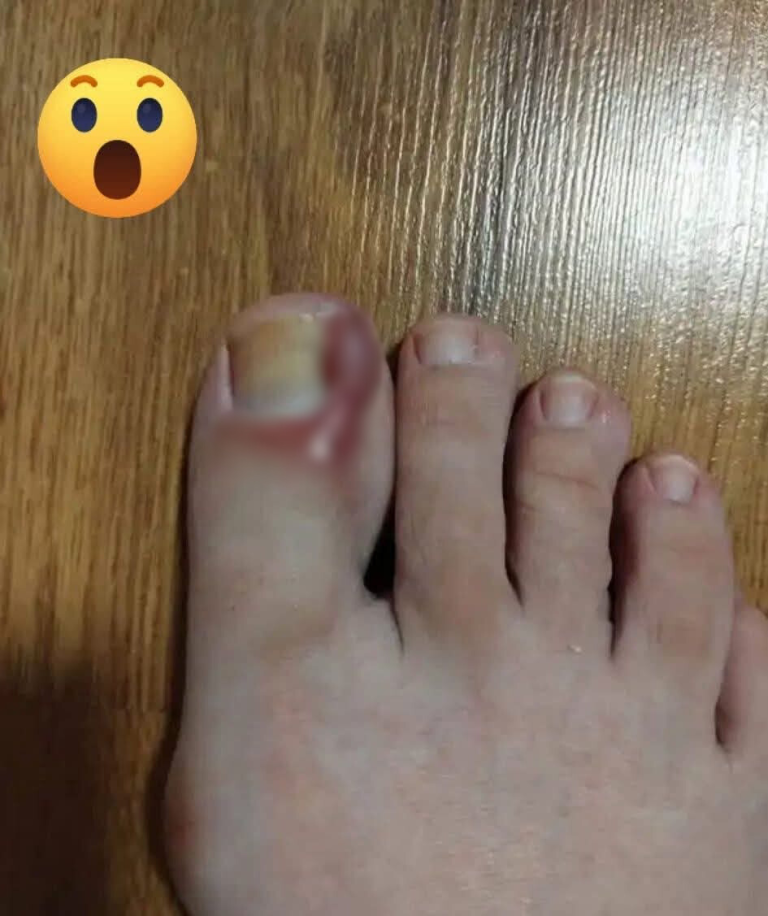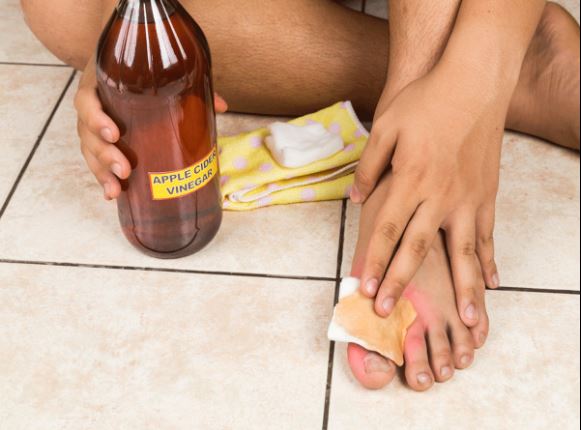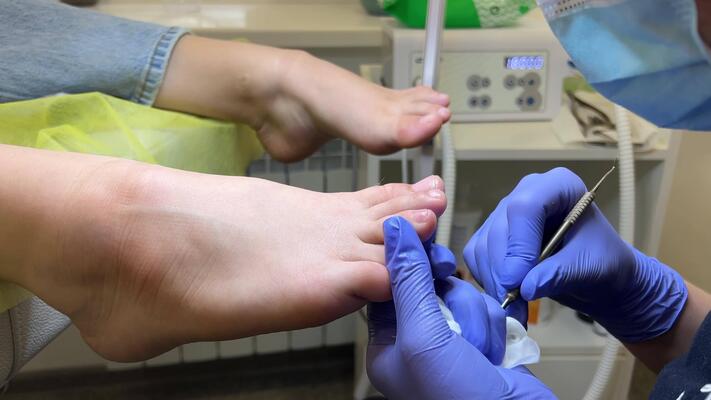NAIL NIGHTMARE! Those Yellow, Brittle Nails Could Be a Stubborn Fungus! (Your At-Home Fix & Prevention Guide!)
Are your nails looking yellow, thick, or brittle? Do they feel crumbly or painful? You’re not alone! Nail fungus, that stubborn, unsightly, and frustrating condition, is far more common than you think. It thrives in warm, moist environments—especially in closed shoes or shared spaces like pools or gyms, turning your once-healthy nails into a source of discomfort and embarrassment.
You’ve probably tried countless over-the-counter remedies, only to find them expensive, ineffective, or filled with harsh chemicals. The truth is, nail fungus can be incredibly persistent, making you feel like you’re fighting a losing battle. But what if I told you there’s a natural, affordable, and surprisingly effective remedy probably sitting in your pantry right now?
It’s time to ditch the frustration and embrace a simple, time-tested solution that can help you reclaim healthy, clear nails. This isn’t just a hack; it’s a path to confidence and comfort!
🚨 DON’T IGNORE THESE NAIL SYMPTOMS! 🚨
Nail fungus often starts subtly, but if left untreated, it can worsen, causing discomfort and even pain. Your nails are always talking to you. Are you listening?

Here are the critical symptoms that could signal a fungal infection:
- Discoloration: The most common sign is a change in nail color, often turning yellow, brown, or white. Sometimes, it can even look black.
- Thickening: The nail may become thicker than normal, making it difficult to trim. It might also feel hard or brittle.
- Brittleness/Crumbling: The nail can become crumbly or ragged at the edges, easily breaking or flaking off.
- Distortion of Shape: The nail may become distorted in shape, lifting away from the nail bed (a condition called onycholysis).
- Dullness: The nail might lose its natural luster and appear dull or opaque.
- Foul Odor: In some cases, a slight foul odor may come from the infected nail.
- Pain or Discomfort: While often painless in early stages, severe infections can cause pain, tenderness, or discomfort when wearing shoes or walking.
- Remember: These symptoms can be caused by other conditions. But if you notice persistent changes in your nails, it’s crucial to address them.
The Secret Weapon: Your White Vinegar Remedy!
White vinegar, with its natural antifungal properties, creates an environment hostile to fungus, helping to stop its growth and promote healing. It’s affordable, safe, and surprisingly effective for mild to moderate cases.
Here’s how to use it for best results:
- Clean Your Nails Thoroughly: Always wash your feet or hands with soap and water, and dry them completely. Fungus loves moisture, so starting with a clean, dry surface is essential.
- Apply Pure White Vinegar: Dip a clean cotton swab in pure white vinegar and apply it directly to the affected nail. Be sure to get it along the edges and on the thickest, most discolored areas. Do this twice a day—morning and night.
- Be Patient and Consistent: Nail fungus doesn’t disappear overnight. Stick to this routine daily for at least 4–6 weeks, or even longer for severe cases. Consistency is key to success with natural remedies.
- Avoid Touching Irritated Skin: If the skin around your nail is sensitive, broken, or irritated, avoid direct contact with undiluted vinegar. You can dilute it with a little water (1:1 ratio) before applying to prevent further irritation.
- Don’t Reuse Cotton or Tools: Use fresh cotton swabs each time to prevent spreading the fungus. Always disinfect nail clippers, files, or any other tools after every single use (e.g., with rubbing alcohol) to prevent re-infection or spreading the fungus to other nails.
- Let Your Nails Breathe: Avoid using nail polish or acrylic nails while treating a fungal infection. These can trap moisture, create a breeding ground for fungus, and worsen the condition.
- Trim Your Nails Regularly: Keep infected nails short to reduce pressure, prevent further damage, and allow the vinegar to reach deeper layers more easily.
- Keep Socks and Shoes Clean: Change socks daily, wear breathable shoes (avoid synthetic materials), and ensure your footwear isn’t tight or sweaty. Wash your shoes regularly or use antifungal sprays/powders inside them when possible.
- Protect Your Feet in Public Areas: Always wear flip-flops or shower shoes in shared showers, locker rooms, swimming pools, and gym areas to reduce the risk of re-infection or picking up new fungi.
- Support Your Immune System: Eat a balanced diet rich in vitamins, minerals, and antioxidants. A healthy immune system helps your body fight off fungal infections more effectively from the inside out.
When to See a Doctor (Don’t Delay!)
While white vinegar can be very helpful for mild to moderate cases, it’s not a magic bullet for everyone. It’s best to consult a healthcare professional if:
- The infection spreads rapidly to other nails or skin.
- The nail becomes very painful, swollen, or produces pus.
- The infection doesn’t improve after a few months of consistent at-home treatment.
- You have diabetes, poor circulation, or a weakened immune system, as nail infections can lead to more serious complications.
Your Vigilance is Your Power!
Nail fungus can be managed naturally and affordably with patience and the right habits. By combining the power of white vinegar with diligent hygiene and supportive lifestyle choices, you can effectively combat this stubborn condition.
Your nails are a window to your health. Don’t ignore the signs. Take action, be consistent, and reclaim your healthy, beautiful nails!
Don’t let nail fungus hold you back any longer! Share this essential guide with anyone who needs it, and let’s spread the word about these life-changing tips!
Beta feature




